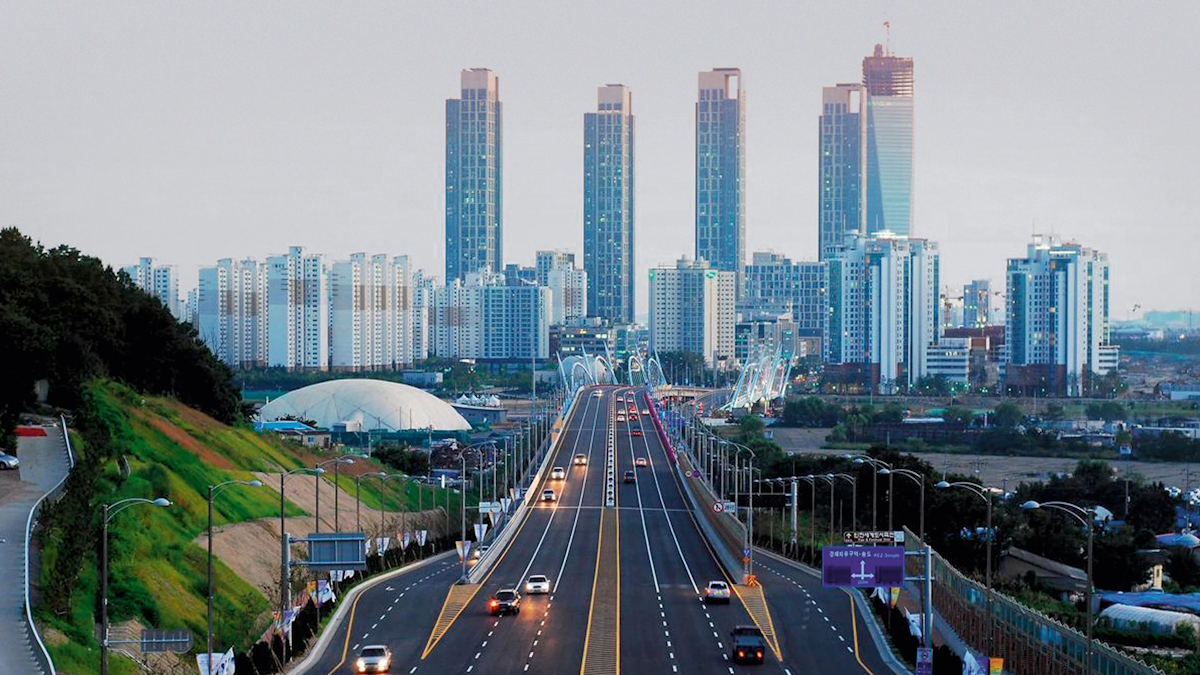As urban populations swell and environmental pressures intensify, cities are being reimagined through the lens of technology and sustainability. At the heart of this transformation lies artificial intelligence—an invisible yet powerful force reshaping how cities operate, serve, and care for their inhabitants. Explore how AI is enabling the rise of truly smart cities: places that are not only efficient and connected, but also conscious, responsive, and centered on human well-being

In the rapidly evolving landscape of urban development, the concept of the “Smart City” is no longer a distant ideal, but an emerging reality shaped by the integration of cutting-edge technologies—chief among them, artificial intelligence (AI). As the world’s urban population continues to rise, the pressure to rethink city infrastructure, resource management, mobility, public services, and sustainability has never been more critical. In this context, AI emerges not merely as a technological tool, but as the cognitive framework that can enable cities to become truly responsive, adaptive, and centered on human well-being.
A city’s transformation into a “smart” entity depends fundamentally on its ability to perceive, interpret, and act upon a vast array of real-time data generated by its inhabitants, infrastructure, and environment. This is where artificial intelligence plays a pivotal role. AI acts as the nervous system of the smart city—processing data, learning from behavioral patterns, and making autonomous decisions that optimize urban life.
From traffic management and waste collection to energy distribution and emergency response, AI enables city systems to function in an integrated, intelligent manner. For instance, urban transport networks enhanced by AI can analyze traffic flows and predict congestion before it occurs, dynamically adjusting traffic signals or rerouting vehicles to maintain smooth mobility. This shift moves cities from reactive models to proactive, self-regulating ecosystems that prioritize efficiency and livability.
Autonomous Infrastructure and Predictive Public Services
One of the most transformative applications of AI lies in the automation and personalization of public services. In future cities, AI will make services not only faster and more efficient, but also contextually aware and individually tailored. Consider smart healthcare kiosks equipped with AI diagnostic tools that provide instant health assessments, or predictive public safety systems capable of identifying and mitigating risks before they escalate.
Drones, powered by AI navigation and surveillance algorithms, will revolutionize both logistics and public safety. In high-density urban areas, they will autonomously deliver goods, assist emergency services, and monitor security conditions, offering real-time data streams to centralized AI platforms for continuous optimization. These applications already show promise in cities like Shenzhen and Dubai, where AI-regulated drone corridors are being piloted as the future of urban logistics and surveillance.
In the realm of transportation, the fusion of AI and autonomous mobility solutions is reshaping how we conceptualize commuting and accessibility. Self-driving vehicles and driverless public shuttles, coordinated through AI traffic management systems, will significantly reduce accidents, emissions, and travel time. Vehicles will communicate with each other and with urban infrastructure to anticipate road conditions, manage intersections autonomously, and prioritize emergency transit.
Additionally, AI-powered predictive analytics can help relocate parking infrastructure to city outskirts, reclaiming central urban spaces for pedestrians, nature, and community life. These reclaimed areas may become green zones, cultural spaces, or wellness hubs—prioritizing the social and environmental over the automotive.
The advent of hypermobility, exemplified by technologies like the Hyperloop, will be further empowered by AI. While vacuum-based transport systems promise to annihilate geographical constraints, AI will be essential to their safe and efficient operation—coordinating logistics, managing passenger flow, and ensuring energy efficiency. The implications are profound: rural revitalization, decentralization of economic opportunity, and a redefinition of work-life balance. With AI handling both physical and digital logistics, geography may cease to be a barrier to opportunity.
Modern buildings are evolving into fully autonomous, AI-managed ecosystems. These structures will host not just homes, but full-service environments encompassing healthcare, leisure, education, and retail. AI will orchestrate climate control, energy consumption, security, and maintenance, transforming the building into an intelligent organism that adjusts in real time to the needs of its occupants.
Inside, domestic AI will support daily life with robotic assistants that manage household chores, monitor residents’ health, and even interact socially to combat isolation. With wearable devices and smart home sensors feeding data into AI health monitors, preventive medicine will become an embedded part of urban living, decreasing reliance on emergency care and increasing life expectancy.
The City as a Health Guardian
Health services in smart cities will be decentralized, democratized, and digitalized. AI will act as a continuous health companion, collecting biometric data, detecting anomalies, and interfacing with telemedicine platforms. The physical structure of the city will contribute to health outcomes: buildings will regulate lighting to align with circadian rhythms; public spaces will filter and monitor air quality; and embedded sensors will detect and respond to incidents like falls or heart attacks.
In this framework, the city becomes a health guardian—an environment that actively promotes physical, mental, and emotional well-being. This marks a paradigm shift: from treating illness to fostering wellness through urban design.
Beyond healthcare, AI will support a holistic vision of well-being. Urban spaces will be designed not just for functionality, but for human flourishing. Parks enhanced with AI will offer personalized fitness routines. Rooftop gardens will be climate-optimized for meditation, reading, or socializing. Virtual wellness coaches, driven by AI, will guide citizens in maintaining balanced lifestyles through personalized recommendations for sleep, nutrition, and exercise.
This approach is already being explored in cities like Copenhagen and Montreal, where well-being is being recognized as a core metric of urban success—not merely an afterthought.
Circular Economies and AI for Sustainability
The transition to a circular urban economy will be impossible without AI. Waste management, resource recycling, and renewable energy systems all require real-time data integration, predictive analytics, and intelligent automation. AI will enable cities to become not only self-sufficient, but symbiotic with their environment—generating more than they consume, and wasting nothing.
Buildings will be designed as energy producers, using AI to optimize solar capture and thermal regulation. Water systems will recycle graywater and rainwater intelligently. Organic waste will be processed locally for energy or compost, managed entirely by AI-powered logistics systems. Cities like Amsterdam and Barcelona are pioneering this vision, proving that data and intelligence can drive ecological responsibility without compromising urban comfort.
Perhaps the most revolutionary potential of AI lies in its ability to make cities emotionally intelligent. Smart cities of the future will be capable of sensing the emotional climate of their populations and adjusting public experiences accordingly. Through AI-analyzed inputs from public sensors—such as connected benches, ambient microphones, or biometric feedback—cities will detect stress levels, engagement, or unrest, and respond with adaptive lighting, calming music, or enhanced public services.
However, such a future also invites critical ethical considerations. The project launched by Sidewalk Labs in Toronto—while ambitious in its integration of data-driven design—was ultimately halted due to privacy concerns. This underscores the need to balance emotional intelligence with privacy, transparency, and citizen consent, ensuring that AI enhances lives without intruding upon them.
A Vision of Harmonious Urban Intelligence
The Smart City of the future is not a spectacle of machinery, but a sanctuary of life empowered by intelligence. It is a city that listens, learns, and acts—not just efficiently, but empathetically. In this vision, technology does not displace the human; it elevates the human experience, offering the most precious resource of all: time.
Ultimately, AI is not the destination, but the means to create cities that are livable, sustainable, and profoundly humane. A truly smart city is one that understands its people—not just through data, but through values. As we move forward, the greatest challenge and opportunity will be to align artificial intelligence with urban compassion—designing cities that care.



